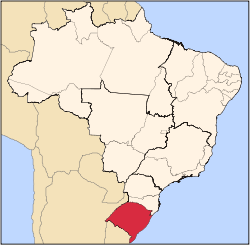This article needs additional citations for verification .(January 2021) |
Vespasiano Correa | |
|---|---|
 Location within Rio Grande do Sul | |
| Coordinates: 29°04′S51°52′W / 29.067°S 51.867°W | |
| Country | |
| State | Rio Grande do Sul |
| Population (2022) [1] | |
• Total | 1,818 |
| Time zone | UTC−3 (BRT) |
Vespasiano Correa is a municipality in the state of Rio Grande do Sul, Brazil. [2]


